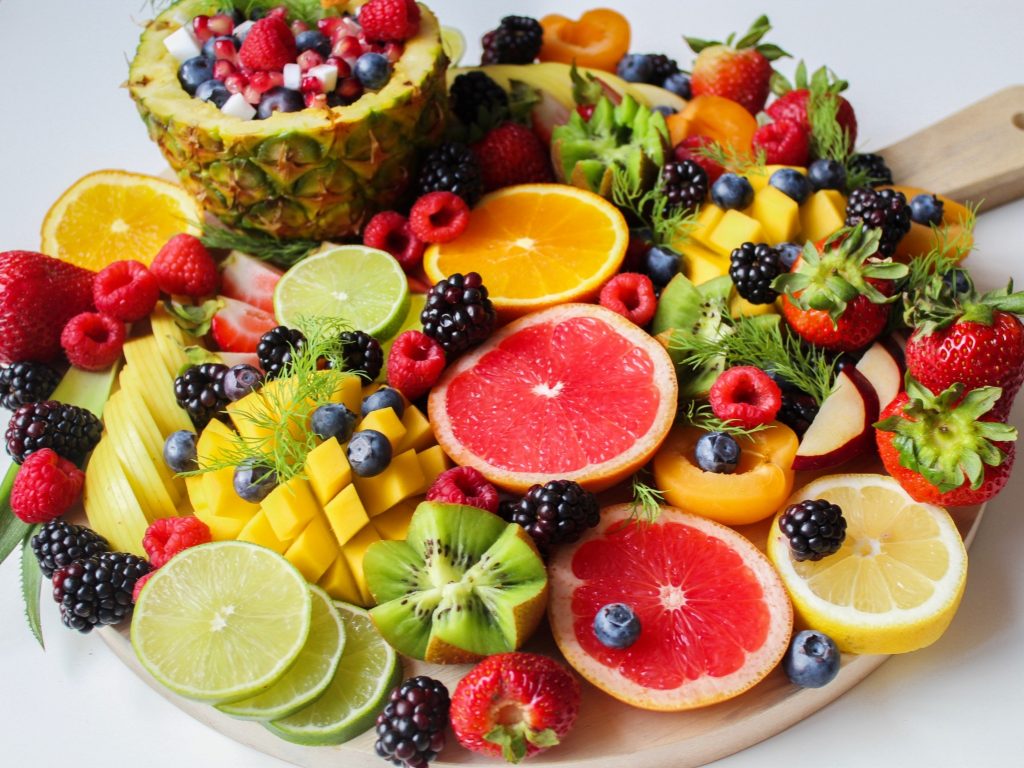Fruit
The Australian Dietary Guidelines recommend eating a wide variety of fruits every day.
Fruit provides vitamins, minerals, dietary fibre and plant chemicals called phytonutrients that help to keep us healthy and protect against chronic diseases such as heart disease, diabetes, stroke and some types of cancers (1). Fruit is low in kilojoules (energy) in comparison to many other foods, therefore choosing fruit first over discretionary items can help to prevent excessive weight gain.
Different coloured fruits contain different nutrients and therefore have different health benefits. It’s important that we eat a variety of fruits of different colours each day, such as:
- Strawberries, watermelon, raspberries, cherries, apples
- Oranges, mangos, peaches, apricots
- Pineapple, banana, lemon
- Kiwifruit, apples, grapes, pears
- Blueberries, plums, grapes, blackberries

Whole fruit vs fruit juice
Research shows that 93% of 4-8 years olds eat their recommended serves of fruit when fruit juice is included in the count. However, when fruit juice is excluded, this figure is only 61%. Both of these figures fall dramatically as kids get older (2).
Whole fruit is preferred to fruit juice as fruit juices are generally higher in energy (kilojoules), lower in dietary fibre and can damage your teeth. While fruit juice contributes to your daily serves of fruit, whole fruits are more filling and are an overall healthier choice.
Recommended serves
It should be noted that the number of serves varies according to activity levels, age and health status.
| 2-3 years | 4-8 years | 9-18 years | |
|---|---|---|---|
| Boys | 1 | 1 ½ | 2 |
| Girls | 1 | 1 ½ | 2 |
What is a serve?
- 1 medium apple, banana, orange or pear
- 2 small apricots, kiwi fruits or plums
- 1 cup diced or canned fruit (no added sugar)
Or less often:
- 125mL (1/2 cup) fruit juice (no added sugar)
- 30g dried fruit (for example, 4 dried apricot halves, 1 1/2 tablespoons of sultanas)
What to look for
Remember that you don’t always have to rely on fresh fruit: frozen, canned or dried varieties are all suitable too. Dried fruit, however, can stick to the teeth and increase the risk of tooth decay so should be consumed less often, such as a few times a week, and in small amounts. When it comes to choosing canned fruits, always choose those canned in ≥99% fruit juice (not syrup) and without added sugars. When selecting dried fruit, check the ingredients list and choose those with no added sugar.
Common myths

Should I limit my fruit intake because of the sugar content? No – the sugar in fruit is naturally occurring, rather than added sugar. In addition, fruit contains many other important nutrients that help to keep your body healthy and protect you from disease and infection.
Foods and drinks with added sugar are most commonly discretionary choices, which are energy dense and nutrient poor. Excess consumption of discretionary foods and drinks can lead to overweight, obesity and other health risks such as diabetes and heart disease.
1- NHMRC – Australian Dietary Guidelines Summary
2- 2007 Australian National Children’s Nutrition and Physical Activity Survey






